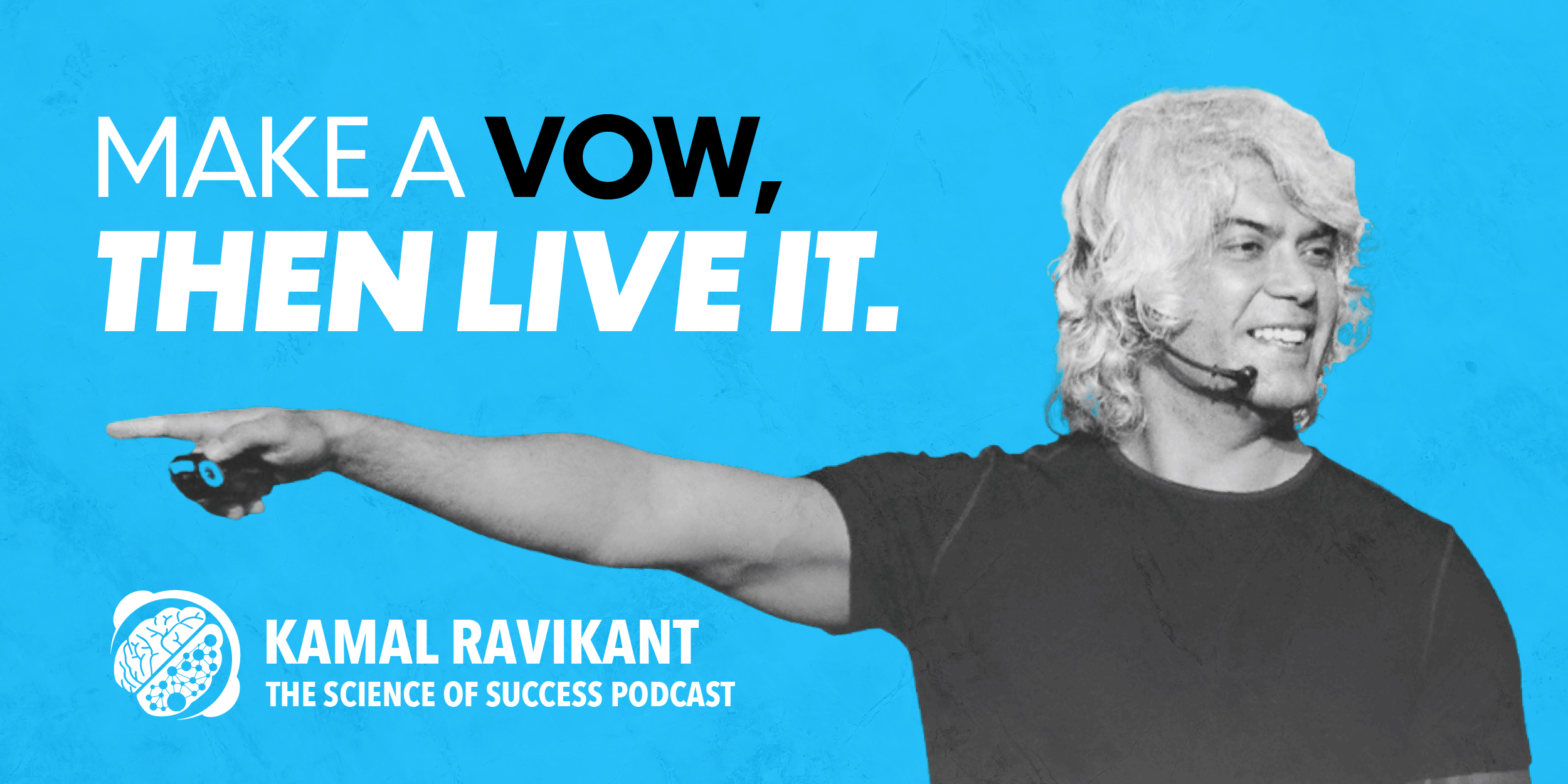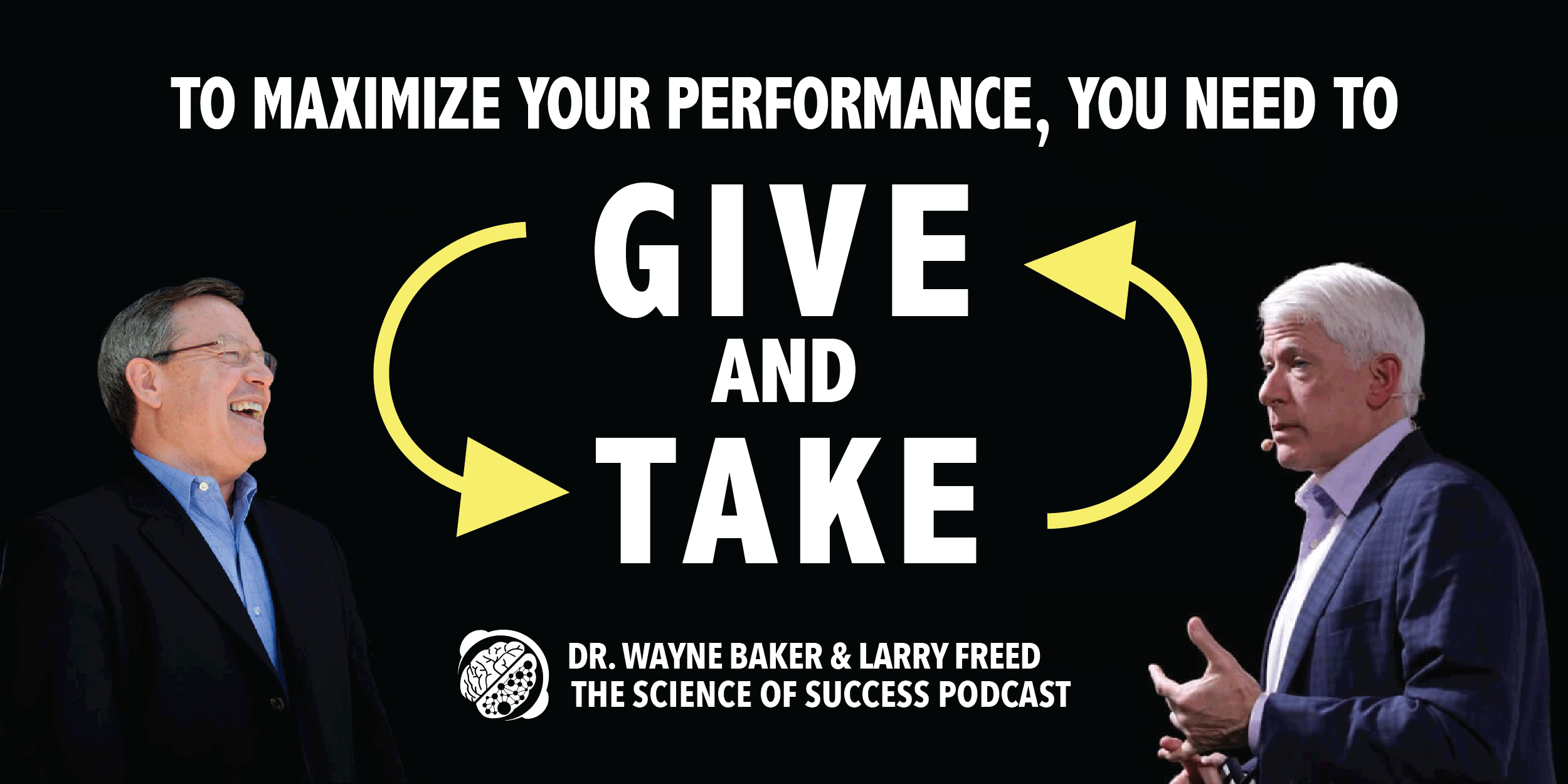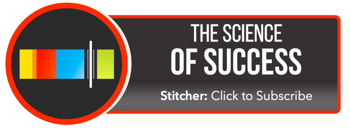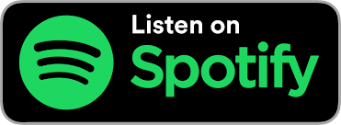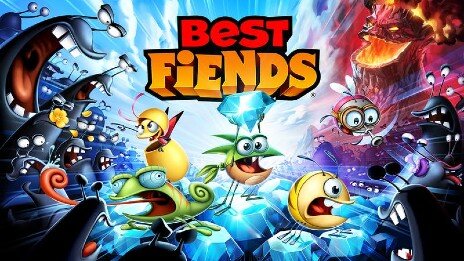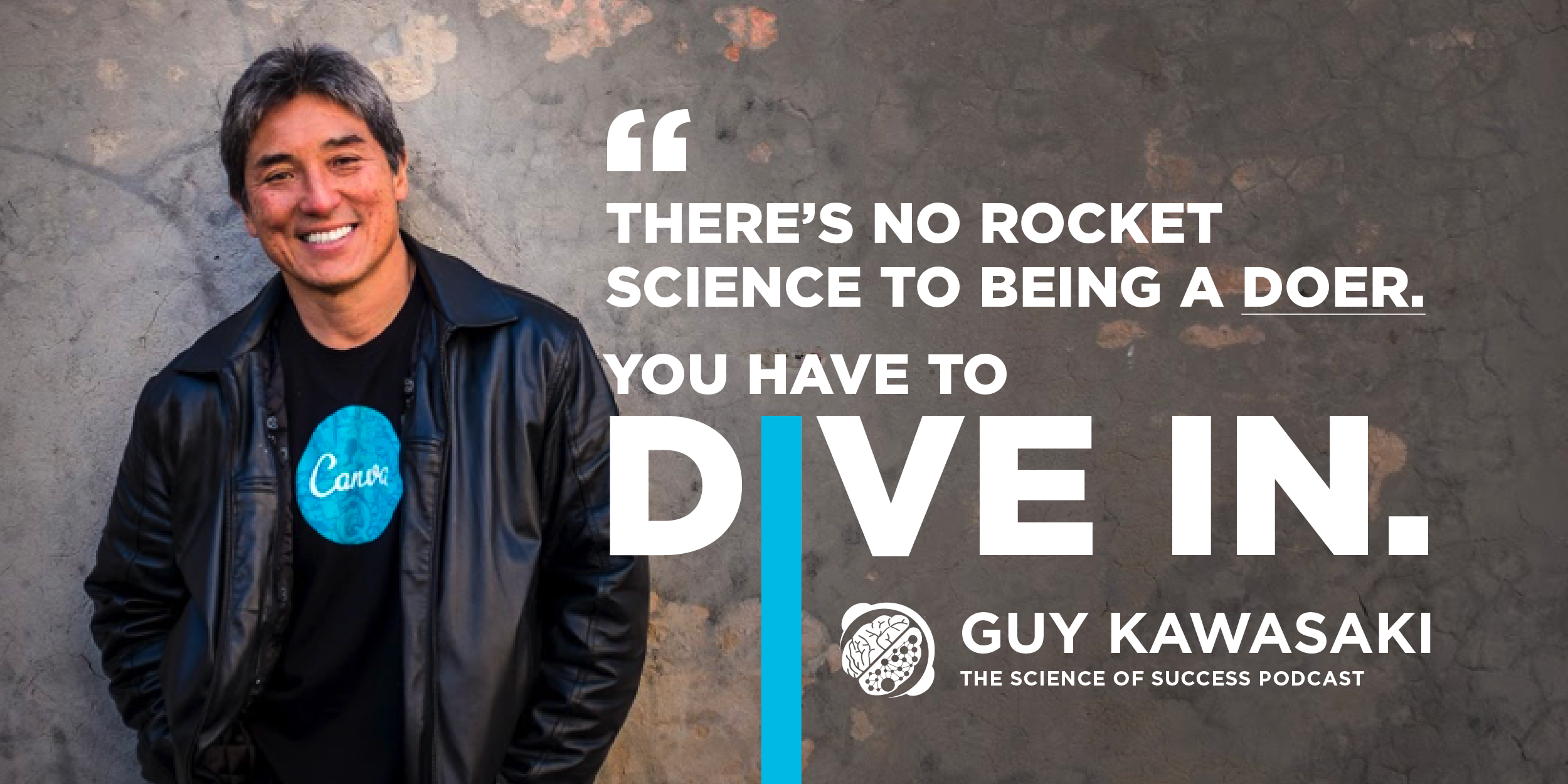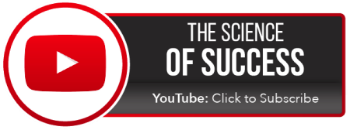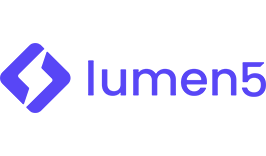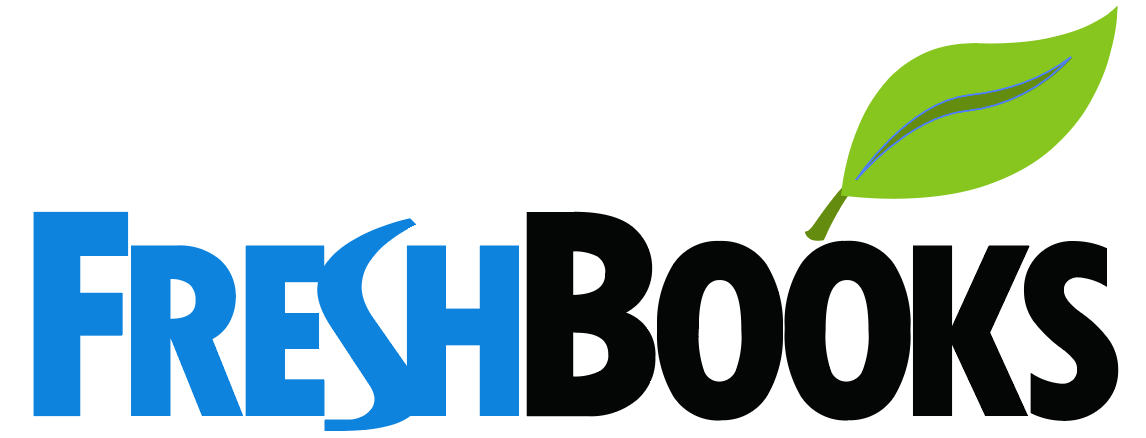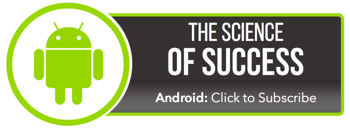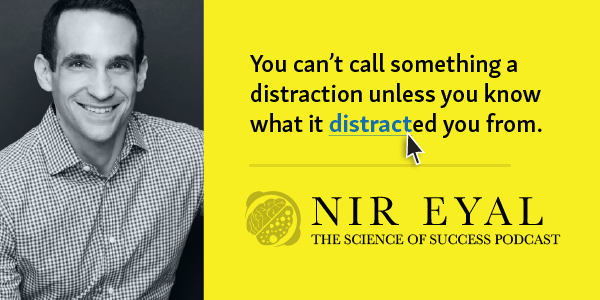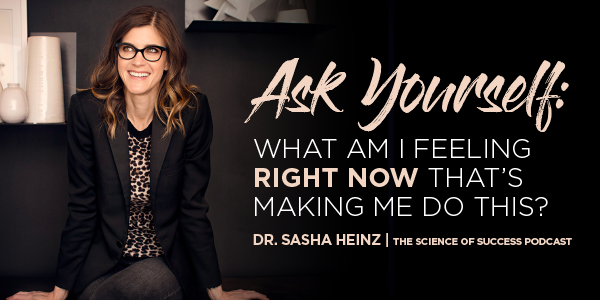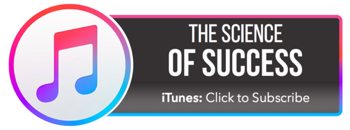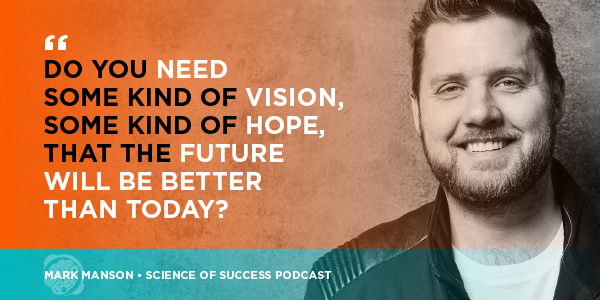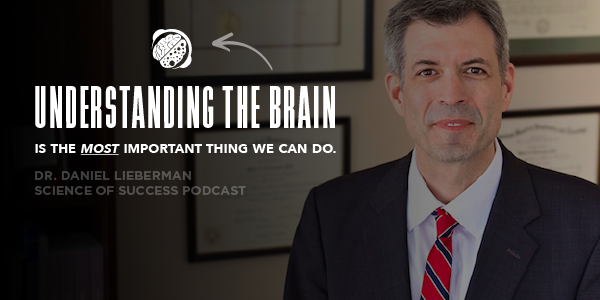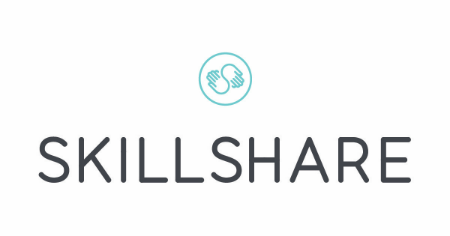Episode Transcript
[00:00:04.4] ANNOUNCER: Welcome to The Science of Success. Introducing your host, Matt Bodnar.
[0:00:11.8] MB: Welcome to the Science of Success; the number one evidence-based growth podcast on the internet with more than three million downloads and listeners in over a hundred countries.
Do you feel like you don't have enough time and you're constantly in a state of reacting to external stimulus? How do you conduct a powerful monthly review that will unlock opportunities for growth, focus and improvement? In this episode, we go deep into all of this, and stacking powerful mental models, harnessing best practices and optimizing your entire life with our guest, Sebastian Marshall.
I’m going to tell you why you’ve been missing out on some incredibly cool stuff if you haven’t signed up for our e-mail list yet. All you have to do to sign up is to go to successpodcast.com and sign up right on the home page.
On top of tons subscriber-only content, exclusive access and live Q&As with previous guests, monthly giveaways and much more, I also created an epic, free video course just for you. It's called How to Create Time for What Matters Most Even When You're Really Busy. E-mail subscribers have been raving about this guide.
You can get all of that and much more by going to successpodcast.com and signing up right on the home page, or by texting the word smarter to the number 44-222 on your phone. If you like what I do on Science of Success, my e-mail list is the number one way to engage with me and go deeper on what I discuss on the show, including free guides, actionable takeaways, exclusive content and much, much more.
Sign up for my e-mail list today by going to successpodcast.com and signing up right on the home page, or if you're on the go, if you're on your phone right now, it's even easier. Just text the word “smarter”, that's S-M-A-R-T-E-R to the number 44-222. I can't wait to show you all the exciting things you'll get when you sign up and join the e-mail list.
In our previous episode, we discussed how to train yourself to think and act like a spy with lessons from a real-world expert. In the game of Spycraft, the stakes couldn't be higher and one mistake may land you dead or in a foreign prison. In that deadly crucible, only the best ideas survive. We crack open the secrets you can use to influence, develop relationships and create a bridge with anyone that you meet with the die-hard rules from the world's top spies with our previous guest, Jason R. Hanson. If you want to learn how to influence anyone, even under difficult conditions, check out our previous interview with Jason.
Now, for our interview with Sebastian.
[00:03:11] MB: Today, we have another great guest on the show, Sebastian Marshall. Sebastian is an author, entrepreneur and founder of ultraworking com. His blog, sebastianmarshall.com has been read by over half a million people from a wide range of industries and walks of life. At Ultraworking, Sebastian helps those who are already tremendously productive take even greater leaps and get more done in record time. Sebastian, welcome to the Science of Success.
[00:03:39] SM: I'm maximally excited to be here. This is going to be fantastic.
[00:03:44] MB: For listeners who don't know Sebastian, Sebastian and I have gotten to know each other over the last month or two. I've actually been a reader of his blog for almost nine or 10 years now, and always been a big fan of the way he thinks and the way he writes and the way he approaches the world. I'm really excited to have you on the show today Sebastian.
We've been doing some cool stuff recently around Ultraworking and we did a free event recently for our e-mail subscribers that was really fun and exciting. I'm so pumped, because there's so many different topics and things that we can dig into today.
[00:04:15] SM: Yeah, likewise. I think this can be a really, really good show, Matt. Because I think we both are in to one of the same things, which is we read a book and it's not like, that was fun. We want to take it all the way apart and then put it back together in our own lives, all the takeaways. Your book notes are phenomenal. Your analysis is phenomenal.
Most of the time, you're hosting, you very rightfully have – whoever the PhD that's coming on, that's pushing research forward be the star of the show, but I hope we can keep this a bit of a dialogue, because your way of thinking and approach to the world, and Austin as well. Shout out to him. We did Mindset Monday and he's super, super sharp and that was one of my favorite shows that I've been on. Really fantastic.
I'm looking forward to going deep, understanding a principle and then taking it apart, so like, what can I do with that? What's the pieces of that that I can really understand how anyone from Arnold Schwarzenegger, to a famous military general, or someone who was very successful in industry five years ago or 500 years ago in 1850, or in 1995, or in now, or in ancient Roman times did it. I think we're going to cover a lot of really good ground. I'm very excited.
[00:05:28] MB: I love the way you phrase that and this whole idea of taking things apart and putting them back together and trying to understand the component pieces and how to use them and apply them as something that I don't know if I've actually thought about, or phrase it in that exact way in the way that I think about and approach my own thinking.
That certainly guides the way that I digest, or intake really any information of whether it's a podcast interview, or a book, or anything. I really want to understand how the building blocks fit together and how I can – Because I feel like once I get to that fundamental level, I understand the building blocks, then I can reassemble them in different ways and I can figure out what really is the lever that moves things, and I can apply them in all kinds of different contexts.
[00:06:11] SM: Okay. Okay. I know we potentially had topics we're going to hit. Let's get back to that. Let's just stay here for a second. I'm interested in two things, right? One is the actual ability to take things apart, analyze them, understand the takeaways. Cool. What does that mean for me? Maybe I should know some numbers and maybe I should work on my physiology, maybe I should think about this a certain way.
Let's ask the harder question first, which is Matt, there's a lot of smart people out there, right? Everybody who listen to this show are super-smart person. You're taking a real research-oriented approach of incredibly credible guests on here that know their stuff. Some percent of the people that are listening are like, “Cool, I want to go understand that principle, implement it and get more results in my life.” Some of them are like, “Okay, that's fun.” That’s fine, if they're happy where they're at and they're cruising and they’re listening for entertainment. Totally cool.
Some people want to be doing better. They’re ambitious. Whether they're in a creative field, whether they're building a career, whether they’re building a business, whether they’re in the non-profit sector, whether they have aspirations to go into politics, whether they want to make contributions to science.
A lot of people are going to want to do things, but then they even start to get the analysis, take things apart, see the lines on it, then they don't go put it into practice, which is one thing I really admire about you is you do that and you really think a lot about that and spend a lot of time doing that. Then you have a pretty cool life. You're doing a ton of really cool stuff. It’s like, why does that happen? What's the gap? Among people that want it and can analyze not putting it into action, where do you reckon that comes from?
[00:07:34] MB: I think that's part of the reason why many of the episodes we have on the show focus around psychology, self-awareness, self-sabotage, those topics, because – and this is something you and I have rift on outside of the show, is this whole idea that I fundamentally believe and I think one of the guiding principles of the Science of Success is this idea that everyone has the latent potential to achieve things well beyond what they even think is possible.
In order to access that, I feel in most cases people get in their own way, we’re standing in our own way. Whether it's self-sabotage, whether it's lack of awareness, whether it's a fixed mindset, I feel there's so many psychological barriers and limitations that prevent people from ever really taking that step of applying it, whether it's a limiting belief, or a fear, or uncertainty, or an inability to have Wisdom and really know, or understand, or be able to make tough and challenging decisions in a world filled with uncertainty. I think that there's a lot of psychological components that underpin that.
[00:08:39] SM: Well, I find that answer very persuasive, because it's the same answer like the Ancient Greeks came to would know thyself a couple thousand years ago. I'm not sure it's gotten easier. In theory, it's easier. There's so much information out there and it's possible. I think if I can just flag something semi-unrelated to what we're going to talk about, but important. I think a lot of people don't realize, but they could probably get in touch with just about anyone from any field they were curious about reasonably easily; maybe not any individual person, like maybe not Elon Musk. If you want to talk to an aerospace engineer, you could get in touch with somebody in a few hours. That's the internet and people are not taking advantage of that, right?
People are not saying “You know, I'm interested in doing XYZ.” I have friends and really, places with no infrastructure that are in bad shape that just use the internet to talk to the United States, who are even more happy to talk to people that are working hard to come out of a tough spot, right? It’s like, you could be in the middle of nowhere if you got an internet connection and get on the phone with aerospace. Sure you have to work, you have to research, you have to write your stuff decently and practice and stuff.
We live a narrow-in theory, it's more possible to know yourself, to get access to good information. Probably a lot of people are listening to this are in the car, in the gym. I think that's amazing. You can listen to a podcast with information from experts, well-curated, edited, beautiful on your Apple or Android device, right? It's incredible. In theory, you should be able to know yourself a little better than the past. Maybe a higher percentage of people do. Probably they do. Still, it's a barrier, isn't it? Know thyself and wisdom. Not moralizing, opinionated wisdom, but just wisdom-wisdom. Knowing what's up.
[00:10:15] MB: Yeah. I think that the theme of self-awareness is probably the single most recurrent thing that comes up on the Science of Success. We've interviewed everybody from professional poker players, to astronauts, to neuroscientist, hostage negotiators, people who are experts across a huge domain of fields. Again and again, this notion that self-awareness underpins growth is almost ubiquitous.
To me, that piece of the puzzle is so, so important. The other thing that's really interesting and ties back into this notion of self-sabotage that holds so many people back, the example that I always come back to, because it just really crystallizes it for me is weight loss. The reality of losing weight is that, or being healthy, or getting to a body fat composition you want, or whatever. I'm just using weight loss as a generic term to describe all of that, but the reality of losing weight is that it's not a problem of lack of information, right?
There's tons and tons of information, but so often, people think that the way to get someone to change their behavior, or the way to get themselves to change the behavior is through awareness.
Most people really fundamentally understand how to lose weight and yet, there's a huge disconnect between knowing it, or knowing that they should do it and actually doing it. That's where I think a lot of the psychology starts to come in, and the puzzle of motivation and all these other pieces that underpin all of this.
[00:11:42] SM: That's really, really interesting. I think about this and related things fairly often. It is and it isn't. The basic information is out there, right? I mean, I'd say there's probably two problems if somebody wants body composition, right? The first one is you need to learn the basics, the macronutrients, right?
There's 9 calories in 1 gram of fat, there's 4 calories in 1 gram of carbohydrate or protein, protein takes a little more energy to digest so it's effectively and actually 3 calories. That's one of the reasons and they say when losing weight you should eat protein, right? It's the most efficient. Carbs depending on if there's fiber, probably a little better. Then fat has some important things. You can't cut it entirely, but it's the most calorically dense, whatever, right? There's that and you can learn that. You can learn portions and stuff.
I think what a lot of people don't realize is that getting all that stuff mentally is most at best, half the game. The real half the game is adherence. It's all the situation's you're presented with the opportunity to make a choice consciously, or unconsciously that's against what you want.
I think a lot of people are not studied on how to actually adhere to things and a lot of people don't have the general and meta skills that are the same for regulating your diet as they are to regulating your money usage, the same to discipline the project management across a team. If you're an entrepreneur, all these particular peculiarities about these spaces and they work a little differently. A lot of fundamentals are quite similar.
I'm not sure that people actually know the entirety of the equation. A lot of people don't even realize that things like weight loss is an adherence game. You have to adhere to your program. That's the hard part. The hard part is not designing the program. Actually, no. That's not hard. I'll just say it's not hard. You could do it. A nutritionist could do it for you. A personal trainer could do it for you. They’ll look, like if you know, if you can vet credible sources, you can look up some good ones up online, right? Adhering to your program, well that's hard. I'm not sure people know how to do that. You could describe it both ways.
[00:13:40] MB: I think to some degree, adherence comes back to at least in my opinion, mostly a psychology issue. This is zooming out, this makes me think about fundamentally the skillset of how to think, or how to make decisions.
If I think about the weight loss example, people spend the majority of their time trying to get the perfect information, or trying to get as much information as possible to create this absolutely perfectly crafted strategy for losing weight, but the reality is if you just took something that was good enough, if you just started doing some basic cardio, cleaning up your diet a little bit, that would probably get you 90% of the way there, with extremely basic, extremely simple tactics.
The big barrier to a lot of people implementing that is that they haven't developed the thinking infrastructure, or the decision-making infrastructure to be able to assess the situation like that and understand what the important decision factors really are that are actually going to create the results they want in their lives.
[00:14:39] SM: Well said. I see what you mean about psychology. Now you're actually not talking about a honed incisive psychology. You're talking about the most broad and holistic sense, which is modeling and understanding yourself and other people over time, and understanding your own behavior and where that comes from and what's going to prompt it and shape it. That's interesting.
A lot of people when they talk about psychology, they think about psychology-psychology, right? They think about a psychologist with a degree, right? A psychiatrist or something, right?
No, you're talking about it really holistically and systemically, which is correct and more true. When you put it that way, actually that makes a great point. Then as to the knowledge and the decisions, it's interesting and you're right. It’s like, get started. Probably one of the reasons that it's hard, I would say, is that there's best practices. Some of the best practices are truly universal, or they at least apply to 80, 90, whatever, a very high percentage of people.
If that's the case, it's either true for everybody, or true for almost everybody. You should certainly start with them. If it's a thing that's hard to implement, you should give it a few serious cracks before you say, “That's not for me,” because it's hard for people, but it's the answer, then you should just work at it until you got it.
The hard thing is – I was reading a book on learning. It was a couple years ago. It was written by a programmer, so he has a lot of programming metaphors in there. I'm lightly technical. I wouldn't call myself a technical person. I'm okay. It's like, I could follow a lot of it. He was talking about with learning, he's talking about how beginners really, really, really want rules. Beginners want rules. They want to do X. They want, don't eat before 8:00 a.m., don't eat after 4:00 p.m. It's the 8 to 4 diet, whatever, right? It’s what they want.
They eat up one grapefruit to start the day, right? Whereas, very advanced people and there's stages you go through and whatever, but very advanced people tend to operate on heuristics. That’s interesting already. Then I think the important part with anything; diet, habit, change, anything, is understanding what type of person you are and getting a correct conception of that some people are capable of moderation and some aren't.
That's one of the first things to figure out in life is are you capable of doing a bad thing in moderation? You got to be really honest with yourself, you know what I mean? Are you capable of going and doing something that's a little bit bad for you and then not going any further and not going off the rails?
Some people are, some people aren't. There's probably spectrum there too. Figuring that out about yourself is pretty important, right? Because then you figure out whether you have to be hard rules never do the thing, or whether you can shape it a little bit and do a little bit better.
[00:17:11] MB: You said something in there that I think is worth expounding upon, which is this idea that very advanced people tend to operate on heuristics, instead of rigid rules.
To me, that underscores something that longtime listeners, or many listeners have probably heard me ramble on about and some people may hear this phrase and get super excited, and some people may hear this phrase and say, “Matt, why do you keep bringing this up and what is it?” It makes me think of mental models and this mental models approach to thinking about and understanding the world.
This comes back all the way to what we're talking about the very beginning of the conversation, because I think we went down the rabbit hole of looking at this from the lens just as an example of losing weight, for example.
I think this really applies to any result you want to achieve, anything you want to create in the world, any outcome you're trying to accomplish, you have to be able to breakdown the fundamental things that cause that outcome to happen. Whether you want to be happy, or you want to make more money, you want to lose weight. Any result you want to achieve in life, you have to be able to break down.
If you're a beginner as you said, maybe you start with some really simple rules. If you really want to master the game and pursue a true path of mastery and be one of the top people, really create epic results, you have to have the – as Charlie Munger called it, the mental models approach, which is this idea of breaking things down into heuristics, or models, or rules of thumb that explain how the building blocks of the world work. Because once you understand those building blocks, you can then combine them, or change them, or use the right ones in any given particular challenge.
[00:18:50] SM: Totally. I'm going to. It's good.
[00:18:53] MB: You've always been somebody who has had a really detailed understanding of digging into and applying mental models. Even from the early days of your blog, you study a tremendously diverse field of topics and yet, find these really concrete ways to bring those lessons back and apply them. Whether it's studying something – an example I know you always like to use is Soviet deep battle theory, right? Or Toyota manufacturing lines.
To me, we could even make this more broaden or generic, which is if you're studying John D. Rockefeller, or you're studying Caesar, you're studying somebody who's a world-class achiever, how do we take these esoteric concepts and ideas, or as we might also call them mental models, from whether it's deep battle theory, or manufacturing, or economics, or anything? How do we take these ideas and start to in a very concrete sense, understand and apply them in specific contexts and areas of our lives?
[00:20:00] SM: Most of the most successful people I know, they do two things, right? The first thing they do is they look for the known best practices and they do those, right? A lot of times, you can look around, you just find a best practice. It's like, okay, seems like everybody in personal finance in the United States recommends using one of those tax advantage retirement accounts and filling that up first, right? You should probably put your cash there first, pay off any debt and then that, right? Probably. Maybe not, but probably if you're starting out, right? There's that.
Then, you go what after that. Most of the very successful people I know are very willing to do short-term, very inexpensive, low-risk experiments. They're going to just try something, right? There's the grand examples of it obviously. Here, let's pick a really boring one that probably nobody will do, if they're not already into it, but it's great. You could go take an accounting course, a community college. You could go learn a little bit about accounting. Accounting is beautiful. It's really cool. It's really useful. You do it once, you're sorted. You could practice that. That's worth doing.
Then going a step beyond that, if you want to get inventive, you could say, “Okay, John Rockefeller, let’s say running a business.” Okay, John Rockefeller started looking at. Then 37signals later wrote about this. I believe that was in probably in rework. It was one of their books about taking your waste products, your scrap products and turning those into something that's useful.
Turning out just secondary outputs and turning those into something that's sellable. In oil, there's a variety of whatever, secondary chemicals or whatever that are left over from oil and you could sell those and make things out of those. I don't know. When you come across a historical figure that's really interesting, or a metaphor that’s really interesting, or a concept that’s really interesting, like from Toyota.
Toyota has one that's really interesting, which is they've got a diagram that they have, where there's three things that are at work. There's value-producing work, there's non-value producing work and there's waste, right? When they diagram this out, they actually find the vast majority of businesses have under 20% of work is value-producing, right? Value-producing work is stuff the customer actually cares about, right? If you're a baker, you're baking cakes. When you're putting the dough together and put it in the oven, that's value-producing.
There's non-value producing work you have to do. That's payroll, that's regulate – I don't know, which side of regulation it goes on. Certainly, administrative internal stuff is non-value producing for the customer. You have to do it, but if the business just did that it wouldn't be doing anything valuable.
There's waste. They take the concept of waste and they make it really a very expensive thing; any unnecessary movement in Toyota counts as waste. If a guy on the assembly line in a Toyota factory has to bend over for a tool repeatedly, that's waste right there. If you have to push something 10 feet on the ground, that's waste. They are ruthless about like, well there's a little shelf, so people don't have to bend over, and will set things up just perfectly so things don't have to be carried. We won’t have to push anything. Never mind scrap product and rework and stuff like that. That's always.
You hear that, and that's super interesting. The first time you hear that, that's super interesting. Value-producing work, non-value producing work, waste. Very interesting. You hear that, you're a little smarter, super good mental model. Taiichi Ohno wrote a great book. He's a chief engineer at Toyota, or one of them. Great book. It’s like, the system's something, or the Toyota Production System. Taiichi Ohno. Genius.
You hear that and you’re a little smarter. You’re like, “Oh, what do I that’s value-producing an what’s not?” I think you go to step further if you really want to get the results and you say, “Huh, how do I track for a month, or even a week? What work I do actually produces value? What work do I that doesn't produce value what do I do that's wasted?” Right? You track that for a week, in a month and you come up with however whatever method you do to do that is and you try it out. I guarantee, you’ll learn something interesting if you try to do that.
I’m like, “Oh, how do I set it up? What do I do?” It’s like, you're doing an experiment. You can't do it wrong. I mean, it might be more or less productive, but you just do it. Maybe not everybody wants to do it. Maybe not everyone has the time to do it. Maybe somebody's in an intense university program, or they’re in a really demanding job right, so they don’t time to do these crazy little things. Just a tiny little bit of time.
You learn the mental model of Toyota, mental model – value-producing work, non-value producing work, waste, boom. Remember that. You're smarter. You'll just notice some things like, “Oh, they're doing a lot of paperwork over there.
That's non-value producing work, right? Oh, that person run back and forth three times. That's waste, right?” You get smarter when you know that. Then you go a step further and you're like, “I want to really experiment with that. What do I do?” Try to classify your own for a week, or a month, that's really interesting.
[00:24:49] MB: I think that's a great and practical way to start thinking about these interesting concepts. Because I think anybody – I know, I certainly had this experience and I think a lot of my listeners probably have a very similar experience, which is you read a fascinating book, or you listen to a fascinating podcast and you hear two, or three, or five or 10 ideas that seem really exciting. A lot of times, those go in Evernote, or they go with somewhere and then they sit there and they never get applied.
This notion of doing short-term, low-risk, inexpensive experiments, which is in and of itself is another mental model, is a great idea and one that I certainly will apply to principles and concepts and notions that I find interesting. Do you have a specific example, or instance of a principle that you found really interesting that you've tried and experiment for whether it was successful or not?
[00:25:45] SM: Constantly. I'll tell you, what I do is every month, the start of every month, I'll actually draw up a theme and a policy for that month. I'll try it out for a month, they'll usually be five to seven supporting elements, maybe something I've done before, maybe something I haven't. This seems like a good idea.
At the end of the month, I'll evaluate, which to keep and I keep a fraction of them, because you can't run too many protocols, or habits, right? You can run a lot of them, especially if they're true-true habits. There's an overhead cost to that, right?
I experiment on a monthly basis with things and those vary tremendously. Sometimes they're very expansive and experimental, sometimes they're very consolidationary. Or let me just get back to just really good eating, sleeping, working out, starting the day strong, whatever. It goes across the spectrum from the most fundamental of fundamentals, to the most experiment out of experimental.
I do that on a monthly basis. I think the month is a nice time to do that. You do an analysis at the end of the month as to how it went, start of the month, draw up a new policy. Yeah. I mean, I'm always looking for those. If it doesn't go well, it's a month. Not the end of the world.
[00:26:54] MB: This whole idea of monthly reviews and something that we've come across a number of times in the show and I talk a lot about is this notion of what I call contemplative routines, which is basically just taking time to step back to think a little bit, to evaluate what are you doing? What's working? How is your time and energy being spent? What are your goals and is what you're doing aligned with your goals?
I think, having some review process, whether it's weekly, monthly, even daily in some contexts is a really effective way of stepping back and figuring out whether your time and energy is being spent appropriately or not. I think developing the habit of having some routinized, regular, contemplative routine is one of the cornerstones of being an effective thinker and being an effective decision-maker.
[00:27:47] SM: 100%. I literally don't know anyone with a complex life that's successful that doesn't have regular routine intervals of introspection. I don't think I know anybody that does that less than monthly. Maybe a couple people around quarterly, if they run tight plans and can execute. A lot of the most successful people I know have daily introspection as part of it. That can be as simple as filling out a few questions at the end of a day. I think the week is a very elegant time to do that.
I mean, if you're not putting in an hour a week like, “Hey, what's going on? What should I be doing about it?” That's scary. I 100% agree with you. I have those on the daily level, the weekly level, the monthly level, hard. I do a little bit around the annual level, I don't do quarterly. I do monthly. Yeah, that's really important and really true. Anybody here that doesn't have a single time, like if you only have weekly and daily, you're all right. If you only have daily and you don't know weekly, you're probably all right. You know what I mean? You might be missing a little bit, but it's all right.
If you just do monthly, that's still going to catch some of it. If you don't have anything, that's – I'm not going to say it's an emergency, but if you are ambitious, it's probably an emergency. You got to start studying your life, seeing what's going well and making sure it continues to happen. Seeing what you don't really like and making adjustments. That's essential. It's absolutely essential for everyone to get.
[00:29:09] MB: It reminds me of an e-mail I got recently from a listener, who said that he felt his life was a state of constant reactivity; never had any time, never had any ability to do anything, was just being bombarded and couldn't create any space. Through a couple of the interviews on the show, he was really able to just start and gain a little toehold with one hour of journaling, or contemplative thinking about his goals in his life and what he's doing.
The amazing thing about these contemplatively routines is that once you start, they compound on themselves and build, because that enabled him to get a little wedge and see, “Okay, maybe I shouldn't be spending three hours a day on Facebook.” That was actually what he was doing is getting caught up in the newsfeed and all this other stuff.
[00:29:54] SM: Yeah. So busy, I don't have time to do what I want. Busy spending 21 hours on Facebook a week.
[00:29:59] MB: Exactly.
[00:30:00] SM: I really don't have time to do anything.
[00:30:01] MB: If you never step back and look at it and analyze how was your time being spent, how are your activities aligned with your goals, you're never going to know if you're on the right trajectory or not. Personally, I do it on a weekly basis and then also, probably a quarterly basis at a broader review.
Every single week, I'll look at all of my goals, the big picture, long-term goals that I've set for myself and I will determine what am I doing every single day that week that's going to materially move the ball forward on my major goals and priorities. I'll set specific MITs, or most important tasks on each of those days to ensure that the progress is happening and the action is being taken on those particular goals and activities.
[00:30:45] SM: I love it. We are singing from the same song sheet. I've got some pretty advanced tech that some of it is a little bit advanced, that does some really cool sophisticated stuff to help people track and measure and improve stuff. The dead simplest weekly review, I experimented a lot of formats and people ask me, how do I have a good weekly review, right?
You want to hear the best simple get start, I have an advanced crazy weekly review, but if I get too busy – you want hear my weekly review? It's so simple, but it's incredibly powerful. You want to hear this? I got the best one.
[00:31:15] MB: Yeah, absolutely.
[00:31:16] SM: If everyone doesn't have one, can have it. All right, it's three questions. You write them down and you answer them, right? It’s three questions. One is, what's really going on? What's really going on? I italicized really. What's really going on? Two, so what do I do about it? Three, what matters; what doesn't? What's really going on? What do I do about it? What matters; what doesn't?
I think that's really pretty good, because if your life is just cruising, that's a 5-10 minute thing. What's really going on? Everything's great. What do I about it? Keep it going. Make sure I went to the gym twice last week, go three times this week. What matters? What doesn't? The stuff I'm doing matters. Stuff I'm not doing doesn't matter. Great, right?
If things are a little messed up, that could be a prompt for an hour of introspection, two hours of introspection. Really listing it out. Making a list of everything that you're somewhat committed to and crossing off the stuff you don't want to be doing on the doesn't matter list. Thinking like, “Hey, this thing matters that I'm not doing. How do I do it?” If you don't have it, start there. I think it can't get much simpler than that and cover all the bases, but that's the get started with a weekly review. Write down three questions, answer them. There's advance stuff, but that does a lot.
[00:32:30] MB: Yeah, I love that last question, because in essence, it starts to get at the 80/20 principle and trying to figure out what's really creating the results you want in your life, what's creating the results you don't want? How do you start to shape your actions, so that you can cut off, or remove the things that are creating negativity and spend more time and energy on the things that are actually working?
One of the things that we give away to everybody who signs up for our e-mail list is a free guide, a video course on how to use the 80/20 principle. That entire course, for listeners who haven't done it, or people who haven't joined, is essentially a done-for-you contemplatively team, that even if you just do it one time, will showcase and show you all kinds of opportunities of wasted time, of areas of new focus, of things that you should be doing.
To me, that's a routine that I do on a regular basis to try and really determine how I'm doing, am I aligned with my goals? What's working? What's not working? What matters? What doesn't matter? As you put it, I think all of these questions in some regular format are vital to achieving any outcome.
[00:33:38] SM: Yeah, it's really good. You do the analysis once along those lines and it pays dividends for a long time. There can be a lot of value in doing some tracking and analysis on a regular basis, there's a lot of value. Doing sorts of tracking analysis, again, taking things apart and put them back together just once, does a pretty good job of both instilling the mental model, not in a theoretical level, but on it actually improves some stuff level.
As well as just like, the guy that was 21 hours on Facebook and thought he was busy, right? It's like, well, okay. I mean, the 21 hours is a lot of your life man. It's almost a full day, right? 24 hours in the day. That's not good, right? Yeah, love it.
[00:34:25] MB: Hey, I'm here real quick with confidence expert Dr. Aziz Gazipura to share a lightning round insight with you. Dr. Aziz, how do you become more confident and what do people get wrong about confidence?
[00:34:39] AG: I love this question. My life mission is to inform people this one thing, that you can learn confidence. Because the biggest thing that people don’t realize is that confidence is a skill. They think confidence is something that you’re just born with and that people that look confidence just somehow have some ability that you don’t have. That’s what I thought for many years, until I discovered that actually, this is something we can learn.
What most people get wrong about this, other than thinking that they can’t, so they don’t even try, is they think it’s going to be this huge undertaking and it’s scary and they try to just push through and do this thing that I hate the phrase, but it’s so common, which is ‘fake it till you make it’.
What they don’t realize is that there is a much easier way, a simpler way and ultimately, a faster way, and a gentler way. That is to treat it like any other skill. Like the guitar. You want to learn how to play the guitar, you want to break it down into its individual elements, like notes, chords, progression, scales. If you learn each individual thing, all of a sudden, you could play a beautiful song.
Confidence is absolutely no different than that. You can break confidence down into its little individual elements, like body language, starting a conversation, how to be assertive, all these things can be broken down in sub-skills. If you could learn those sub-skills one after another, take action on what you learn and practice it just like an instrument, all of a sudden, in a pattern – in a period of months – you could be stuck for decades, but in a period of months, you can have more confidence than you’ve ever had in your entire life.
That’s what I’m dedicated to doing, that’s what I teach, that’s what I create all my programs around and that’s really the message that I want to get out there to everyone listening and everyone in the world.
[00:36:16] MB: Do you want to be more confident and stop suffering from social anxiety and self-doubt? Check out successpodcast.com/confidence to hear more about Dr. Aziz and his work and become more confident.
[00:36:33] MB: One of the most interesting things you said to me when we're having our pre-show conversation was this idea of starting with analysis, as opposed to starting with aspiration when you're doing these contemplative routines, when you're doing monthly planning. Tell me more about that.
[00:36:48] SM: Yeah. Most people start with aspiration, right? They start with what would be great? I want to be a piano-playing, marathon-running triathlete, Olympian astronaut, right? I'm exaggerating, but only slightly. People like to dream. They like to think about these big things. I want people to get big things, but I want them to actually succeed. I want them to day dream about it and feel good for five seconds. How do we actually go get that, right?
What I think is that okay, a lot of people just don't try enough stuff, they don't get outside their comfort zone, they're scared, so they just need to be told like, “Go do anything,” right? I mean, you have a big dream, you want to run a marathon, just start running today. Great. Good. Solid.
Assuming you've got a little bit of success, you've got some good things happening, and I don't think probably most people listen. They have some pretty good things happen in their life, they got buried on abyss. It's not perfect. We can do better, but things are going all right.
I think you really want to start. You really, really, really want to start with a state of what's the current state of things and do some analysis. We have a couple of smart spreadsheets and stuff that we do to do analysis and planning. I can put up a couple of these, including monthly planning on ultraworking.com/sos for Science of Success. I'll put them on ultraworking.com/sos, if people want to check them out.
With monthly planning, what we do is we don't start with like, “Oh, what do you want life? What's your goal? What's your whatever?” We start with, how did every day of last month go, right? It's a little ranking thing. The thing is smart. You tell it what month it is and it'll be automatic correctly, these are the weekends, the days, whatever. There’s 28 days in February, there's 31 days in January, whatever.
It’s like, factually what happened that day is the first question. Factually what happened that day? Was it a exceptional day, a good day, a neutral day, bad day? However you judge that. There any takeaways that you might want to do next month based on what happened. Pay close attention. We always tell people, pay close attention to exceptional days and bad days.
You want to say, how many good days, how many exceptional days and good days that I had last month and how many bad days I’ve had last month, right?
If you want to be really happy, or if you want to be really fit, or you want to really have a lot of success in business, like okay. If you're an entrepreneur, you’re getting a business going. How many days of last month did you do the right stuff to get your business going?
If the answer is not many, then you should work on putting in a solid, like what do you need? Do you need product, or do you need growth? Or maybe those are okay and you need better operations. Whatever the thing is that you need right now, like how many days did you work on that? On the days you did work on it, you made breakthroughs. What did you do? You always want to start there.
Very rapidly, you'll see like, “Oh, okay. I had a bad day this day that I didn't sleep, because the night before I went out. I whatever, I didn't sleep, or whatever.” “Okay, on this other day I went on I ate this junk food and I didn't do this whatever and I didn't really work much this day. I screwed off.” You start eliminating those bad days. Make them at least into neutral days.
You try to take some days are pretty good and put the elements of exceptional days in there. You built a lot of momentum and you get yourself really healthy. By doing the things that are already working for you and your good days, you do more of those. The things that are causing your bad days, you stop doing those.
As you do that, you get to a base of like, yeah, my life is going pretty solid. That's the type of place that is the ideal place to start triathlon training, or getting really serious about composing music and making music. Yeah, you could just start. Most people had just start things and then just stop things, right? You want to actually do it for a long time. I think that has to come from a place of looking at what is already going on and what's working.
There's always glimmers of things working. You don't be getting a bad thing. Some day in the month is better than the other days. What did you do on that day? Let's do more of that. Did you walk through the park that day? Let's go for a walk through the park as many days as we can this month, if the park is correlates with a lot of happiness and well-being and whatever.
Then just, what did you do on your exceptional days? Do more of that. On any days, that you're really just like, “That day totally sucked. I was indoors all day and I was on Facebook all day and I just didn't have anything. Oh, I shouldn't be indoors on Facebook all day.” That battle and just not have days like that going forwards.
By starting with the analysis, by starting with where am I already at, you can really build on that. When you finally want to do aspirational, really legit, big aspirational stuff, you want to be in a place where you're going to take it really seriously and actually do it. I always tell people, you never want more than one aspirational thing at a time.
Now, you could say, “Okay, I'm going to try out paintball, running, tooling around a little bit with music, writing a couple poems,” you can experiment and float around and see what you like. That's totally cool. That's great. When you're like, “I'm going to get really good at playing the violin, or I'm going to really write a novel,” then you should take that super seriously and you should do one thing like that. Just one, right?
Until it's really rock solid stable. Then go hard on it. Instead of like, “I don’t really like where things are at,” and have a big aspiration. No. Start with analysis. When you want to an aspirational thing, do it seriously and then succeed.
By all means, try things out. The minute you say, “I want to finish in a good time on a marathon, or I want to complete an Ironman triathlon.” Once you set a goal like that, you should be putting everything behind it. Most of the time, you should be setting those goals after you've established a pretty solid baseline, where it's not going to get derailed and get thrown off. Because success is good. Let's get to some success. I mean, that's the point of the show, right? We want to get the science behind success and get there.
[00:42:10] MB: This idea of a baseline that you're describing is something that I've always thought about. When I study, and I'm going to zoom out then come back to this in a second. When I study world-class achievers, people like Warren Buffett, or Bill Gates, or Elon Musk, or whatever, they have an incredible amount of leverage on their time. By that, I mean, they have the same amount of time as anyone else does, but in that finite amount of time, they're creating massive amounts of results, right? Those could be financial results. They could be any result that you're thinking about.
What happens is when you start with these basic routines, these contemplatively routines, like a weekly review, or a monthly review, or an 80/20 analysis, you carve out a little bit of space and you start to do the analysis that you said is so important, Sebastian, and begin to carve out more and more and more space. What happens is you do that once and you gain the benefits for a long time.
You can keep repeating it and you do it again. Now you've carved 20% of the noise in the BS out of your life the first time you do it. Then you do it three months later and then suddenly, you have this new platform and you carve 20% more of the BS out. That's how leverage starts to stack over time, after you've established somewhat of a baseline and conducted the – and gotten in the habit and routine of having these regular reviews, that's when you really start to see these incredible compounding effects that truly create leverage and the results that you're achieving in any activity that you're involved in.
[00:43:40] SM: Yeah. That's one of my favorite mental models right there. That's compounding, right? You multiply things. When results multiply by each other and then they multiply based on them, then that's really good. To take a different one, if we want to use a math metaphor for life; so there's a couple of things people can do, right?
One of the biggest things in life that I think is really, really good is when you would have a negative day. When you have a day that's hostile to your goals, where you would go backwards, if you can turn that into a neutral day instead of a negative day, I think that's really good.
If you have a day where you're pretty good and you can make that an exceptional day, you move that and yeah, that's really good. Yeah, the more you remove junk out of your life. Here's the thing, right? A lot of people are like, “I don't want to remove junk from my life.” How do I put this? If there's a bunch of junk in your life, you don't have space for good stuff in your life, right?
You know what I mean? If you're spending all your time on Facebook, then you're spending that time. I don't know. If you made some really cool friends, you got along super well with and really had a great time hanging out with them, that would almost assure they’d be more fun than being on Facebook, right? I think we can say that pretty safely.
As you say, cut the junk and then establish a higher level routine, get able to get more output per hour, set a baseline of that. Don't go backwards on your bad days. It's an iterative process. It's not like a snap your fingers thing. I think a lot of people really look for one thing that'll turn around. The good news and the bad news is there's thousands of good things you could do. The more of them you stack up, the better and better you get.
Elon Musk doesn't have one magic trick. He's doing a thousand things right, right? He has baseline understanding of engineering, of physics, of finance, of capital, of people, of teamwork. He learned all these things. You put together all that stuff and a bunch of other stuff and you can build rockets, which is really cool, but you need a lot of things. You need to understand capital, you need to understand regulation, you need to understand teamwork and getting good people and recruiting and in the physical space and material science, all this stuff.
You could slowly build those over time. Elon Musk wasn’t Elon Musk. He was just a guy, right? I mean, he just went out and did it all. That's really cool. That can be as deep as learning advanced physics and material science, or that can be as simple as how do I lock down how I start my morning and start it really strong? How do I ensure that I'm learning regularly? How do I get the good insights out of things?
I love your book notes, Matt. I think we'd be remiss if we didn't talk about them. You have some of the best book notes I've ever seen. You just tear insights out of books, more metaphorically than literally. It's really fantastic.
I mean, that's a practice that you need a little – enough space of – you have a little bit of spare time, so you can read good books and then think about them and then think a little more and then compile them and then actually review them and it just builds. It compounds. How did you get your book – your book notes are awesome. You draw some diagrams and stuff. I love it when I look at those. Those are amazing.
[00:46:45] MB: Well, you're very kind. I appreciate the compliments to my book notes. I've occasionally given away a few mind maps or notes and things like that to listeners, but maybe that should be something I should turn into some more regular content. The way I actually, and this is essentially using the same vocabulary we've already been using, this is basically a contemplatively routine, or a learning routine that I developed and baked into my weekly architecture, which is I try to spend one hour a day on what I call super learning, but that's for a particular reason, but doesn't really matter what you call it.
I try to spend one hour a day. Actually, each day of the week, I have a specific activity that that hour is dedicated to. A couple days a week that activity is dedicated to any learning, or information consumption, whether that's reading, whether that's podcast, whether that's some course that I'm taking, something like that. Then at least once a week, that hour is dedicated to the creation of book notes, or book summaries, or notes that summarized these key ideas.
Then typically every Friday, the last day of the week, that hour is dedicated to the review of previous book notes and previous ideas. I try to stack, or time those reviews around a forgetting curve. I use a free open source piece of software called Anki, or Anki to do that. I don't do it perfectly in every case. Basically, what I'll do is every Friday, I'll print out or review three or four of my book notes from books that I have reviewed over a certain period of time.
The idea is as long as you review them with some regular frequency that the necessary frequency actually decreases as time extends, so it goes from that the first time you learn something, you have to review it one day later, then three days later and then a week later and then three weeks later and then a month later and then three months later and then, etc. That's what a forgetting curve is.
The idea is basically, how do I review and keep all of these different ideas and mental models in my mind in a way that I'm constantly building up this knowledge and harnessing the power of compounding from a knowledge standpoint, so that I can have a more rich and deep understanding of the way the world works?
To me, that comes back to what we've been talking about the entire time, which is establishing these routines and this space to where those kinds of learning activities can even have a place. Because I'm sure, very similar to you and actually you're way more extreme than I am in this, I spend virtually no time on things like Facebook, or things like Instagram, etc.
I have an account, but I haven't posted on Instagram in almost a year. These are the kinds of things that I try to cut out all the noise and really focus in. I don't read the news, for example, is another good ins to that. I try to cut out all the noise and create space for deep learning in my life and create the space for those habits and routines.
Honestly, what enabled me to do that was beginning with these really simple habits of looking at and starting and understanding how do I – analyzing where am I spending my time, what am I doing, what's creating the results I want and what's not.
[00:49:56] SM: Matt, that's incredible. I actually want to take that apart and give some guidance that I'm – as somebody observing your system – let me see if I can tease it apart and speculate as to how the rest of us could do it. I'm actually going to do this. I'm going to get on your case to get on my case that I actually do it, because I got to level up my reading games is awesome.
[00:50:17] MB: I'll send you my weekly guidelines.
[00:50:20] SM: Oh, yeah. I'm going to go hard on it. Before that, you mentioned this thing. I just want to clarify, the news, what is that?
[00:50:27] MB: Exactly. Exactly.
[00:50:28] SM: I'm just messing around. I'll tell you a secret though. I'll tell you a secret. I'm actually not extreme, or hardcore, or whatever the word you use for me, though it's cool. I'll take the label. I'm okay with that. You know what my secret is? Everyone's like, “Oh, Sebastian is so disciplined.” I'm like, “I'm not so disciplined. I just blocked it all in the computer. I just use software to block it all.” I just can't go on Facebook. There you go. No discipline needed. I'll tell people.
There's two things that I do, right? If something is super addictive, I'll straight block it. There's a great Mac app called Self-Control. There's varieties for Windows and Linux. You should do some research on it. There's a lot of tools to do it. Self-Control is really good on the Mac. Default settings, you can block websites for up to 24 hours. You could throw in there Reddit, or Facebook, or whatever you want.
You turn the block list on. It's very hard to turn it off. You could if you really wanted to, but it's really actually quite hard. There's no way to manually override, or whatever. You have to go edit your – I'm not going to even mention how to get around it, but you have to go mess with your computer to turn it off. It's really hard to turn off.
I use Self-Control. I actually edited the settings on Self-Control. I can put links to this too. I actually have a guide on how to edit Self-Control. Not a guide. Like a few lines of code that you can use to make it able to block for more than 24 hours. I put on 30-day blocks at a time. Whatever's been addictive to me lately, I just throw it on block, even if it's otherwise a healthy decent place. I like the site lesswrong.com. It's a smart rationality site. I'm spending too much time on there, just take on a 30-day cooling-off on it.
I like Quora. I think it's smart. There's a lot of valid reasons to use. If Quora has been pathological for me lately, it's going on the block list, right? I do that for blocking. Then I curate everything that I use. It's a little dangerous. There's a bunch of Chrome extensions, if you use Google Chrome as your browser.
A Facebook newsfeed eradicator, great, kills your newsfeed. I login to Facebook. I can click on some group or whatever, or say I'm going to an event or something, but I don't see the newsfeed. It just sucks you in. It sucks me in to. I don't look at it and then I'm super disciplined. I just don't look at it.
Then my favorite one of those is Distraction for YouTube. DFYouTube is the name of the extension. That one kill autoplay and kill suggested videos. I can go to YouTube very safely. Look up whatever the clip that I was looking up, or click on a link that somebody sent me and I'm not YouTube rabbit hole, right? For hours and hours. All of that filtered.
Then there's one more actually. This was a missing piece of the puzzle for me, was there's another great Chrome extension called Fox Filter. You can actually block words from showing up in a URL, regardless of what website it's on, right? Something that I did, this was I play with, it’s a hole in my don't be distracted thing, is I will semi-reflexively Google one of the Boston sports teams.
I'm from Boston originally. There's the Celtics and the Patriots and the Red Sox and whatever, they play sports and stuff. I like sports. It's cool. I think it's really cool. Some people hate on sports. I think sports are cool.
Sometimes, I’d have 10 minutes before something, so I'd Google just Celtics and the recent game scores would come up. I'm like, “Huh, I can't block Google.” I thought about changing my search engine, but Bing doesn't and DuckDuckGo doesn’t. I'm looking at it. Every now and then, okay, usually look there for 10 minutes. Okay, the Celtics beat the Kings 110 to 80. Sounds like a terrible game. I’m not dealing with box score, who cares? Every now and then it’s like, “Marcus Smart got into a fight with James Harden. I better get on this and check it out.”
I blocked everything. It's not about being extreme. It's about just setting things up once. As that relates to what you were just saying is I set up my environment once. Sometimes, you have to experiment and figure out the right tech setup, figure out the right personal routines, but you do stuff like that, then you have time to do things, like read really deliberately.
Then I set some rules of I really prioritize old books, right? I'll read technical books that are new and I’ll read biographies that are new, but anything on general life. I read old books only. If it's in the last hundred years, I don't want to to read it. Some people are like, “Oh, that's hardcore.” You can get translations in a modern English. I pick a foreign book. I think Aristotle's still pretty good, right? He's a smart guy, right? You read old books. Read Sherlock Holmes. It's better than any fictions coming out now. It's really awesome. It's really good.
Then I don't have the hardcoreness about your reading and your book notes. Even as you were describing them I'm like, “Whoa, that is so hardcore. I couldn't possibly do that.” I think about that for a second. I’m like, “No. Of course, I could. Matt's a smart guy. If I work at that really hard, I could probably do that too.” Probably what you do as you started reading, you're probably like, “It would better if I could remember this.” You started some note-taking and you leveled up on the note-taking, then you put a review period on.
Okay, once you have that, you've got most of the pieces of puzzle and you learned how to use Anki. Anki sounds crazy, but it's software that just shows you things less often the more you've looked at them and known what they are, right? That's all it is. It's just to remember stuff. You use it at a workspace repetition. The theory behind, it’s great. There's supermemo, is a great website that has the details on how to do it. Yeah, it's just a genius system that you have.
To your point, I don't think I'm extreme in my non-usage of Reddit. Reddit, it’s just blocked on my computer. I'm not hating on Reddit. I love Reddit, that's why it's blocked. I just block it. Then it’s like, all right, got to do something else. A lot of times, unfortunately, the distraction will run into the next distraction that you have and you’ll start – if you were spending time on Reddit and you start spending time on Hacker News. At some points, you have to make me a choice of whether you're going to shift your general consumption patterns, or just block everything and I've done both.
I don't know. You do that to create the space for like, “Okay, I'm going to read more good books. I want to remember it. I’m going to take more notes. I don't remember my notes. I'm going to review my notes. I could do better reviewing my notes. Okay, I'm going to install space repetition.” Yeah, that's a pretty cool life. As much as it might sound like work and hardcore, it's a lot more fun to do stuff like this, than it is to just surf the net.
I just really would promise everybody here that if they implemented a reading, note-taking review and messed around with tech to make it even more fun, at the end of that, you'd be really proud and you'd have a lot of fun while setting it up and while doing it in the process. If it's not fun, you could probably design it better to be more fun. Because things like this are pretty fun.
[00:56:34] MB: Yeah. There's a bunch of ways that – There's a couple of things you said that I think are really important to draw out and expound upon. The most important thing is this idea that it's not about being a super disciplined person, right? You're not a super human, though you are a very smart dude. I'm definitely not a superhuman. I break down. I miss my daily learning times if I have a busy day. I try to get it in every single day, but I certainly fall off the wagon on those routines.
It's about creating the conditions that enable you to do that in the first place, right? You have to have some distance, or space to be able to create those routines and conditions in the first place and that comes back to the importance of analysis and routine.
[00:57:15] SM: Totally. Something else there; a lot of people break down the first time they have a failure and they give up and like, no, no, no, no, no, no, no. Not right. You should design your protocols and your plans, so that they can survive a little bit of damage. On baseline habits, I actually aim for a 70% success rate. If I succeed more than 70%, I'd make them harder. I'm always around 70% on my habits. If I'm failing recently and below 70%, I make them easier. I use something called the lights spreadsheet. You mark them yellow, red or green based on whether you do them.
If I do this reading notes thing that I think I will. It's really cool and your notes are really out of this world. If you did publish more of them, I think that would be very helpful. They're really, really great. I mean, I've seen a lot of notes in summaries, but yours are really illuminated and there's drawings and really, really, really good. I'd like to try. I'm not going to draw. I can't draw. Even the mind-mapping thing. You've got – They’re really cool.
I'll try the hardcore note-taking with Anki thing. I'll give it a shot at least. It's great. I read a lot and I'd love to remember more of it. I’ll put that on a light spreadsheet. If I get it five days out of seven, that's about right for me. If I'm getting it more than five days out of seven, I might make it a little harder, until I'm calibrated. Some things aren't like that. If you're quitting smoking, you should quit smoking seven days out of seven. Some things are – or die trying type habit, right? You really give it everything you've got.
I think doing that and then accepting that things go wrong, there's a great – there's an okay book. It's not a great book. Called Elite Minds. The guy is an Olympic – he works with Olympic athletes. The coach said, this is a great chapter and it was my favorite chapter in the book, where it's like, not an amazing book. It's a pretty good book. He goes on these long anecdotes there. There's this one thing here that's super important, which he says look, there's no 110% in athletics. You say, give a 110%. No, no, no. That's wrong. There's a 100%. First off, that's math and physics.
Second, a 100% in athletics is 100.1 is dying, right? There's the most the human body can do and serious problems go past that. You actually never want to go near that line. You don't want to get to a 100. Maybe in the Olympics, you want to push yourself 99.9 or whatever and leave it all out there. You usually don't, because it's really bad for your body, right? He goes on about that. He says, the ideal Olympic athlete, the reason people think there's give a 110 is because most people are at 40% to 60% even when they think they're trying.
Most people are only giving 40% to 60% of what they're capable of, even when they think they're trying. I'll say that a third time. Most people when they think they're trying as hard as they can, are only trying 40% to 60% of their max effort. He's talking about sports, right?
If you're running and run as hard as you can. Your hard as you can is probably 40% to 60% of your maximum ability, like if you were getting chased by a wild animal type thing, right? He said, Olympic athletes, he encourages the athletes to train at 80% of their maximum ability and to try to hit as much as they can, but even Olympic athletes will miss three to five days a month.
I’m like, they’re Olympic athletes. They're training all the time, because they want to be the fastest person on earth, the fastest swimmer, or the most accurate javelin thrower, or whatever, right? It's the Olympics. It's the most competitive thing, right? 80%, right? 25 plus days of the month. If you could do that, that's Olympic level.
He said, the good Olympic athletes might be 20, 27, 28 is the month, whatever. Okay, that's pretty hardcore. You got to give 80% of your max ability that might feel like a 110, 120, 130, 150, but it's not give 100%. It's not don't miss any days.
A lot of people collapse, right? After they miss a single day of their habit. It just comes down. That's I think a sign of – I don't mean this in a mean way, but in a factual way. I think it's a sign of immaturity, right? You just think that I want to get my thing perfect and it'll never break again. Nah, you could have a really bad day at some point. Your thing is going to break. That's fine.
You just get back on it the next day. That's the champion mentality. Your days will go wrong. You do some analysis and introspect to fix them and don't collapse when things go wrong. Just get back at it and then there you go. Your system should ideally account for that and you should know how to reset them after a bad day, or even a bad weekend, or even a bad week. It happens. Just get back in the game and keep at it.
[01:01:18] MB: It's such a critical thing to understand and build your systems around the fact that humans are fallible. We make mistakes. We get distracted. It's not about turning yourself into this iron-willed superhuman, it's about understanding your own weaknesses and limitations, which in many ways, comes all the way back to what we're talking about the beginning of the conversation with the importance of self-awareness, but really understanding those and then crafting routines and habits and systems in your life and rituals in your life that take that into account.
[01:01:49] SM: You know what? I got one that might be a good note to wrap up on. I bet you have something like this in your systems too, Matt. I think it's really useful to get really good at clean slating whenever you need, right? To be like, “Okay, yesterday happened. It's over. On it now,” right? I call those fire breaks, right? You establish little fire breaks.
The more often you can be like, “Okay, that just happened. That was bad. Now I'm back on it as if that didn't happen.” Or, “Hey, I just won. I had an amazing day yesterday. Clean slate, I'm back on it today.”
You can cheat a little bit and keep it if you have positive momentum. Yesterday was great, so I'm going to have a great day today. If yesterday was garbage, like yesterday is over. I'm going to have a great day today, right? Just wiping the slate mentally clean, right? Because people get stuck in whatever pattern they're in, right? Some people just really in a zone of their life right now. For them, it's maybe not as relevant.
If you're a little up and down, you're a little bit of a transition, maybe you're a little bored in your grad school and it's the last semester, or you're in a job and you're probably going to switch soon, but not quite yet, or whatever. It's just, get at it every day, right? Have your systems such. For me when I do my weekly reviews at the end of Saturday, as if the last week didn't even happen. Not true I pay attention, but it's like, okay, now it's I start my weeks on Sunday and I end them on Saturday. It's like, okay, it's Sunday. I'm on it. What am I doing this week? I double-strong at the end of months.
I do that to some extent during the day and even at the half day mark. I actually redo similar to a morning planning session. I do that again at the half day mark. My afternoon productivity picks up a lot when I do that. Even if the morning is shot, or crazy, or whatever, it's like, “Okay. Yeah, that’s over. What am I doing in the afternoon today?” I can typically hit one to two milestones that are significant in the afternoon and then do a couple small things. I plan it out. If the morning was great, great. I still want to get on it and cross it in the afternoon. The morning was just yeah. Well, morning is over now, time to get to the afternoon. You got something like that, Matt? I bet you do.
[01:03:52] MB: I think you're definitely more disciplined about it than I do. I think maybe it's just a natural thing. When I think about my periodic weekly reviews, I look at what happened the previous week, but I don't let it impact what's happening this week. I reset everything back to what are my big picture goals and how am I going to take action this week to move those forward?
[01:04:12] SM: That's the game.
[01:04:14] MB: Let's tie this up with something concrete or specific. We've talked about a lot of really specific and concrete and actionable things the listeners can do to start to implement some of these ideas. What would one piece of homework, or one action item be that you would give to listeners to start concretely implementing and going down the road of all of the themes and ideas that we've talked about today?
[01:04:37] SM: I think it's really obvious, that if somebody doesn't have a structured introspection time, they should pick one and they should set it. Some people are better if it's something you do every single day. That could be a review of the day and plan the next day in the evening. Some people just like to do the same thing every day and that's what works for them.
For other people it's like, well, the week's crazy. In that case, maybe they just take a weekly review and carve out a Sunday. You can put a calendar appointment down for yourself on a Sunday, or a Saturday. Maybe you do an hour of introspection by yourself and then you have a call with your dad, your mom, your best friend or whatever and you tell them how your week went and analyze it together. That would even be a fine way to build some accountability.
Of course, you could do it monthly as well. Though, it's obviously a longer interval. Yeah, I think people should put a stake down. If somebody already has a decent review the day, review the week thing, potentially play with different variants of that. I do monthly planning. I'll put that up at ultraworking.com/sos, so people could check that out if they want to. I have some stuff for daily. I'll put that stuff up and I'll mention the questions we put on weekly reviews and such.
I think everybody here should pick a time to just say, bare minimum is what's going on? What do I do about it? What matters? What doesn't? Type stuff. Now that'll be – if that's music, could be vary for making music, that could be a very specific thing like, “Am I playing my scales? Am I composing? Am I playing live in front of people?” Right? Could vary in. Customize it for yourself.
I think establishing a habit of doing it in any format has such an immense amount of value. I question, whether somebody that was not in an extremely simple discipline, and there's some simple disciplines that are very important. I question whether there's something that’s not a simple discipline, could really hit the world-class levels, or even just normal everyday excellence.
I don't think people could get there without a regular introspection habit. Everyone I know that's effective was like, “Hey, what's going on? How are things going? What's working? What's not working? What do I do about it?” On some regular interval. Could be daily, could be weekly, might work if it's just monthly. I think everybody here should get on that ASAP and look forward to it.
It's actually at first, it's a little like, “I'm learning how to do this,” but then you're getting some time to think and make sure you're on what really matters to you. I think that'll really change a lot of people's lives if they don't have something like that.
[01:07:01] MB: Just echoing one of the themes that's underpinned a lot of the conversation we've had today, the first time you do it it's not going to be perfect and you're not going to –you're going to get some insights, but it's going to be messy and sloppy and you're going to be learning through it. You have to have that baked in in some way to really truly harvest the results over time.
Sebastian, where can people who want to learn more about you, about all the things that you're working on and writing and sharing, etc., what is the best place for them to find you and your work online?
[01:07:33] SM: I'll put some templates up that people can use. Check out the monthly planner the next time the month rolls around, next time it's like the last few days month. You go to ultraworking.com/sos. We'll hook you up with some of our best stuff and it's totally free and you can get on that.
Yeah, that'll be really cool. I'll include my links to some my favorite stuff. I tell you what, I'm going to put one other thing up there, Matt. I'm going to get on your case to maybe give me some book notes that haven't been released before or something like that and I’ll link that up and we'll put those in there too. Obviously release them and put them out to everybody, but let's link up some of your best book notes, because these are really a work of art.
People who are just listening are like, “Wow, this Marshall guy is really flattering Matt.” No, they're really good for real. We got to get some of those out. I'm going to twist your arm a little bit and let me link up one of those, so that the world can check them out.
[01:08:21] MB: Okay, we'll make that happen. This has got me thinking more broadly about ways to maybe share those on a more systematic basis, or start to share those with the listeners in some way. I like that you've planted that seed.
[01:08:33] SM: I'm just doing it selfishly. I just want to get credit for getting your beautiful book nose out into the world. They really are. People listening are like, “Really?” I'm like, “Yeah, really. They're really good.”
[01:08:42] MB: You're very kind. Anyway, Sebastian, thank you so much for coming on the show, for sharing all these insights, lots and lots of concrete things for the listeners to execute and apply some of these principles in their lives.
[01:08:53] SM: It's a pleasure, Matt. Godspeed.
[01:08:55] MB: Thank you so much for listening to the Science of Success. We created this show to help you our listeners, master evidence-based growth. I love hearing from listeners. If you want to reach out, share your story, or just say hi, shoot me an e-mail. My e-mail is matt@successpodcast.com. That’s M-A-T-T@successpodcast.com. I’d love to hear from you and I read and respond to every single listener e-mail.
I'm going to give you three reasons why you should sign up for our e-mail list today by going to successpodcast.com, signing up right on the homepage. There are some incredible stuff that’s only available to those on the e-mail list, so be sure to sign up, including an exclusive curated weekly e-mail from us called Mindset Monday, which is short, simple, filled with articles, stories, things that we found interesting and fascinating in the world of evidence-based growth in the last week.
Next, you're going to get an exclusive chance to shape the show, including voting on guests, submitting your own personal questions that we’ll ask guests on air and much more. Lastly, you’re going to get a free guide we created based on listener demand, our most popular guide, which is called how to organize and remember everything. You can get it completely for free along with another surprise bonus guide by signing up and joining the e-mail list today. Again, you can do that at successpodcast.com, sign up right at the homepage, or if you're on the go, just text the word “smarter”, S-M-A-R-T-E-R to the number 44-222.
Remember, the greatest compliment you can give us is a referral to a friend, either live or online. If you enjoyed this episode, please leave us an awesome review and subscribe on iTunes because that helps boost the algorithm, that helps us move up the iTunes rankings and helps more people discover the Science of Success.
Don't forget, if you want to get all the incredible information we talk about in the show, links transcripts, everything we discussed and much more, be sure to check out our show notes. You can get those at successpodcast.com, just hit the show notes button right at the top.
Thanks again, and we'll see you on the next episode of the Science of Success.
